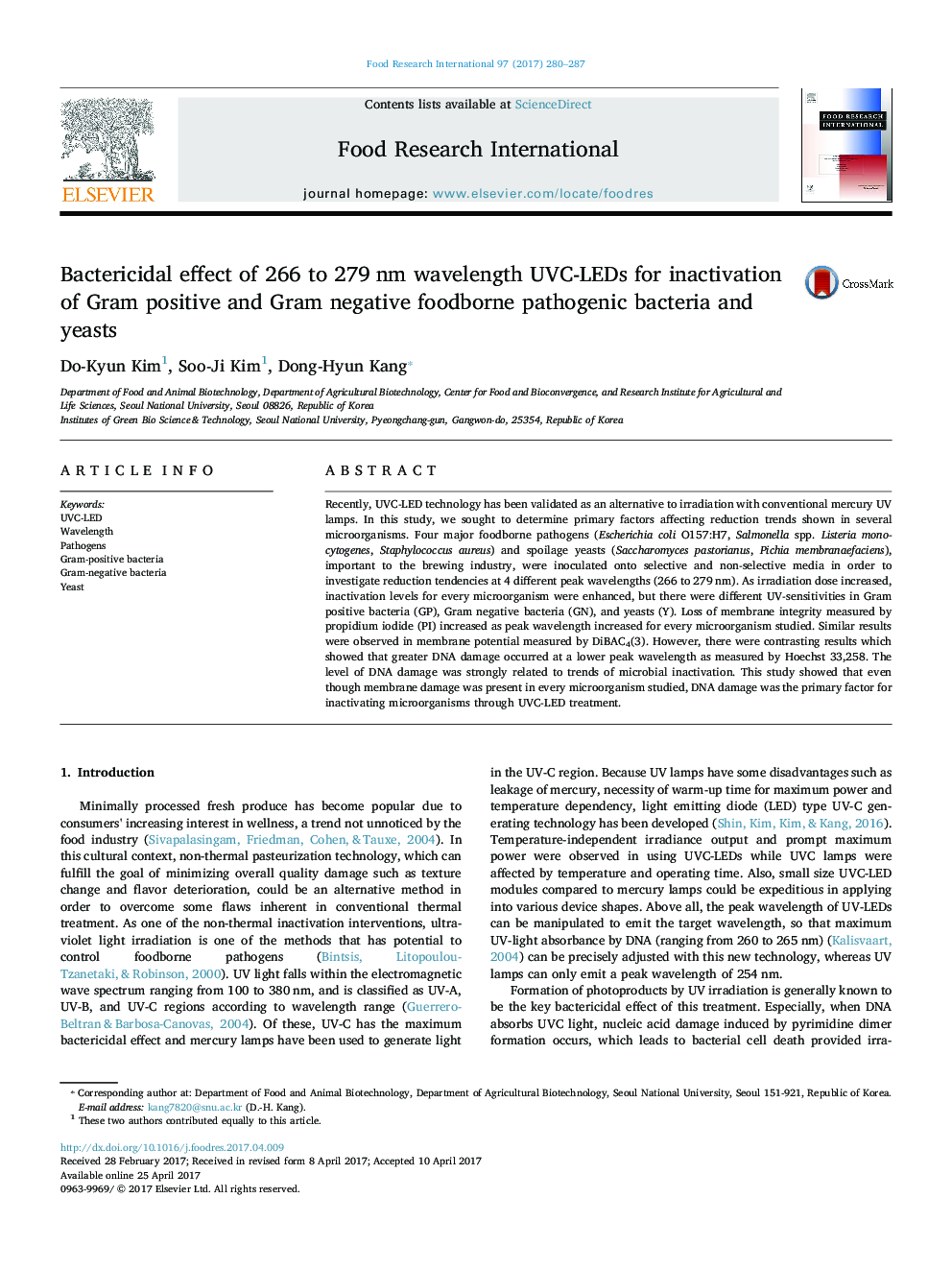| کد مقاله | کد نشریه | سال انتشار | مقاله انگلیسی | نسخه تمام متن |
|---|---|---|---|---|
| 5768234 | 1628453 | 2017 | 8 صفحه PDF | دانلود رایگان |

- UV-LED disinfection rate differs in groups of microorganism (Gram negative > Gram positive > yeast).
- The mechanism of cell death by UV-LED treatment is quantitatively investigated.
- UV susceptibility in the composition of microorganism groups affects inactivation rates.
Recently, UVC-LED technology has been validated as an alternative to irradiation with conventional mercury UV lamps. In this study, we sought to determine primary factors affecting reduction trends shown in several microorganisms. Four major foodborne pathogens (Escherichia coli O157:H7, Salmonella spp. Listeria monocytogenes, Staphylococcus aureus) and spoilage yeasts (Saccharomyces pastorianus, Pichia membranaefaciens), important to the brewing industry, were inoculated onto selective and non-selective media in order to investigate reduction tendencies at 4 different peak wavelengths (266 to 279Â nm). As irradiation dose increased, inactivation levels for every microorganism were enhanced, but there were different UV-sensitivities in Gram positive bacteria (GP), Gram negative bacteria (GN), and yeasts (Y). Loss of membrane integrity measured by propidium iodide (PI) increased as peak wavelength increased for every microorganism studied. Similar results were observed in membrane potential measured by DiBAC4(3). However, there were contrasting results which showed that greater DNA damage occurred at a lower peak wavelength as measured by Hoechst 33,258. The level of DNA damage was strongly related to trends of microbial inactivation. This study showed that even though membrane damage was present in every microorganism studied, DNA damage was the primary factor for inactivating microorganisms through UVC-LED treatment.
144
Journal: Food Research International - Volume 97, July 2017, Pages 280-287